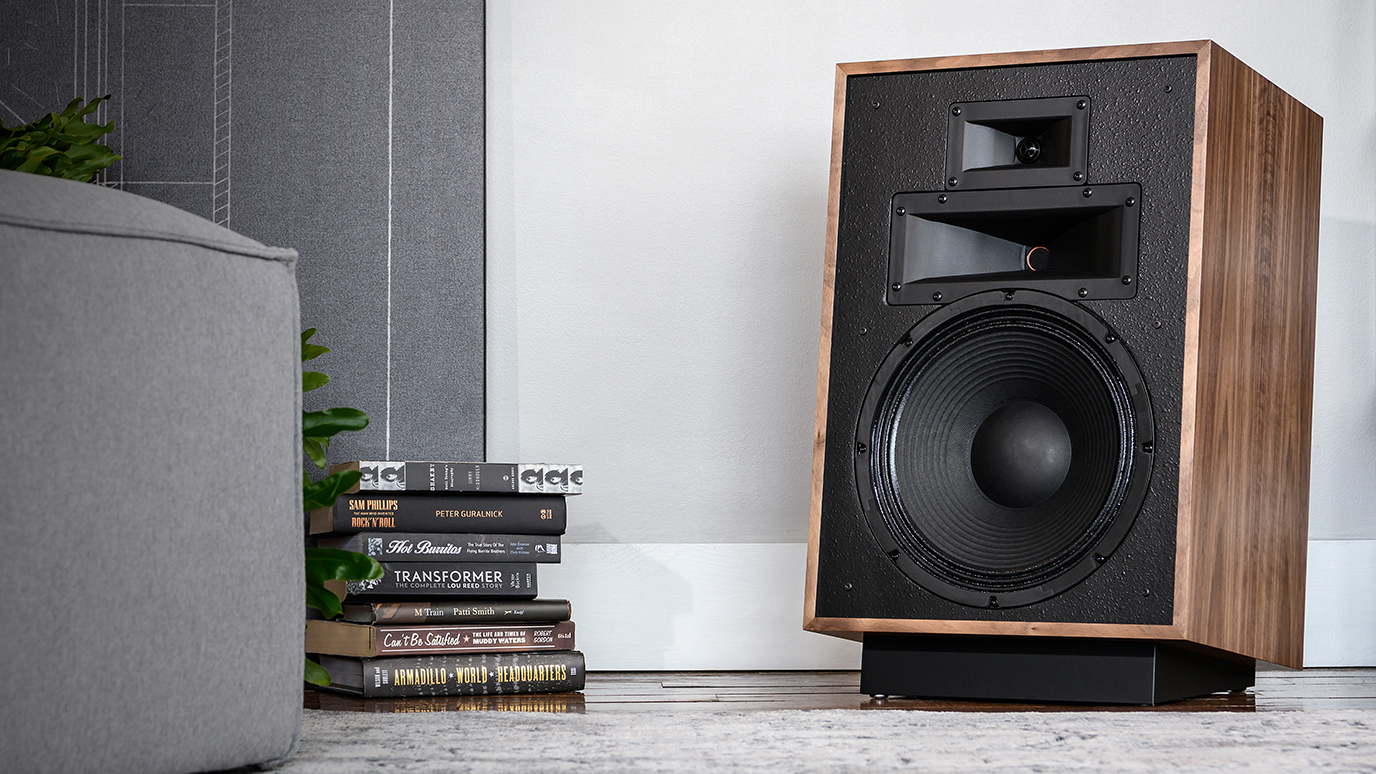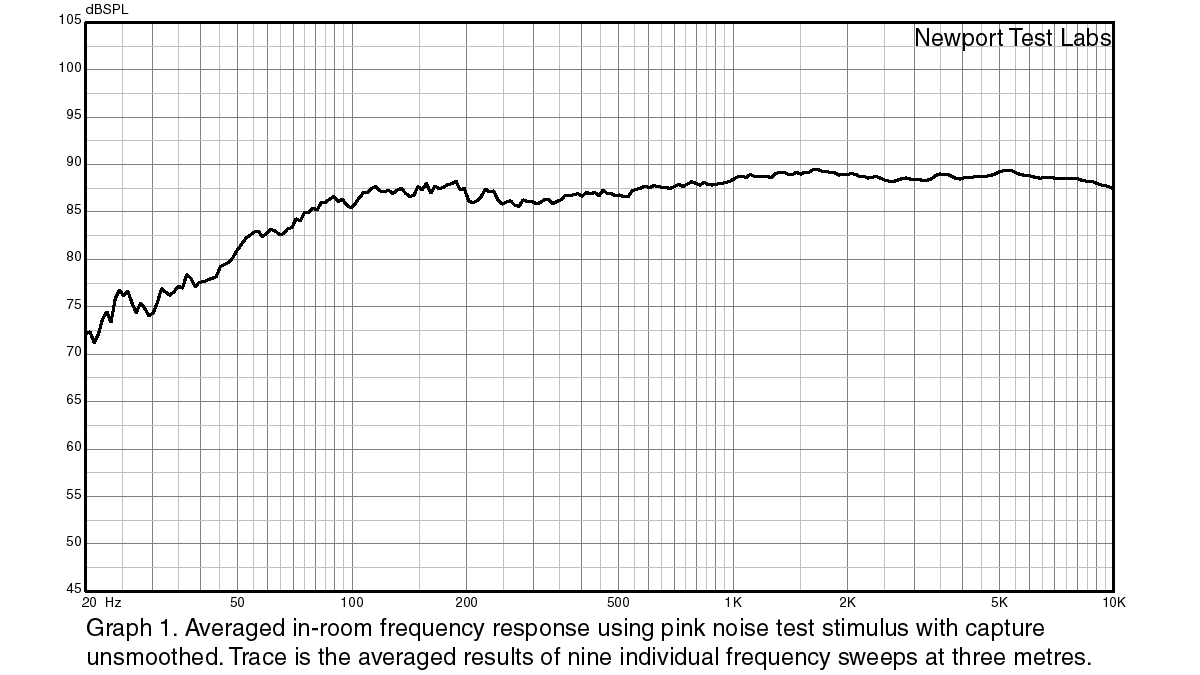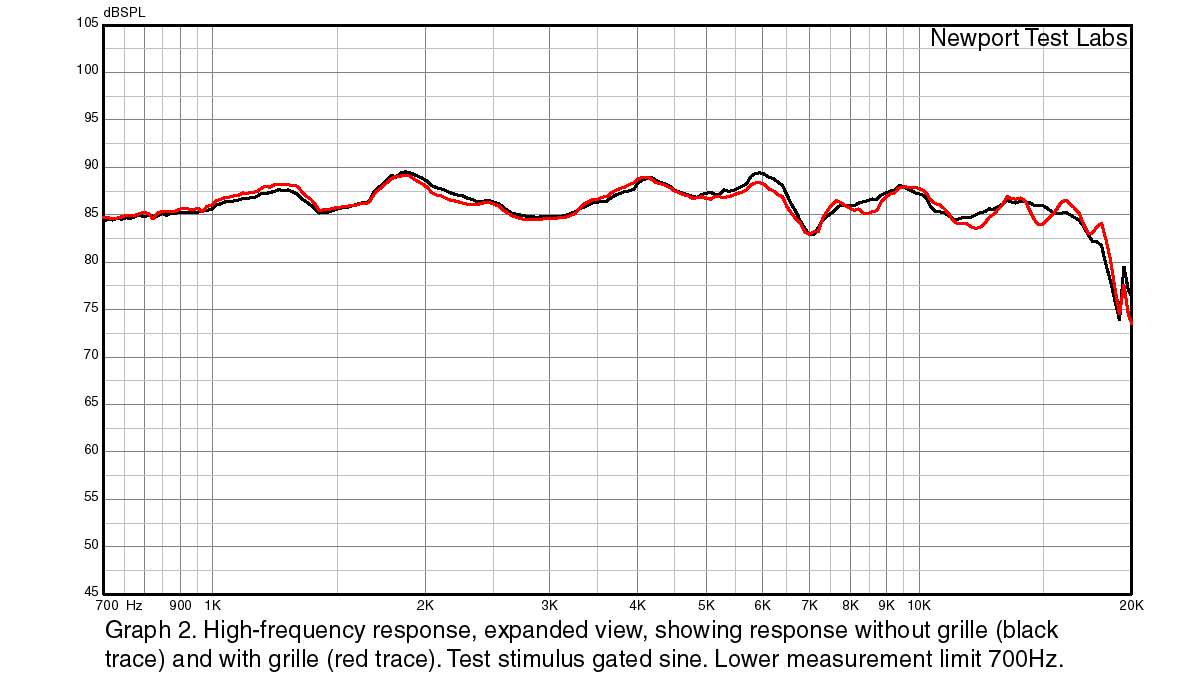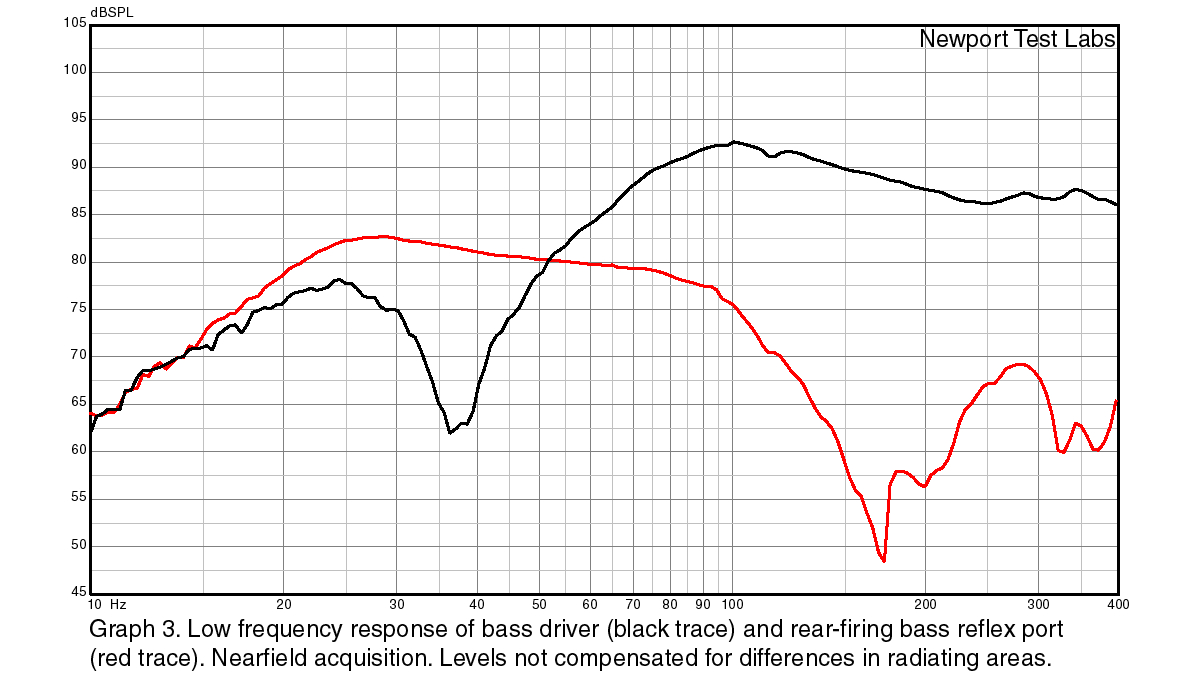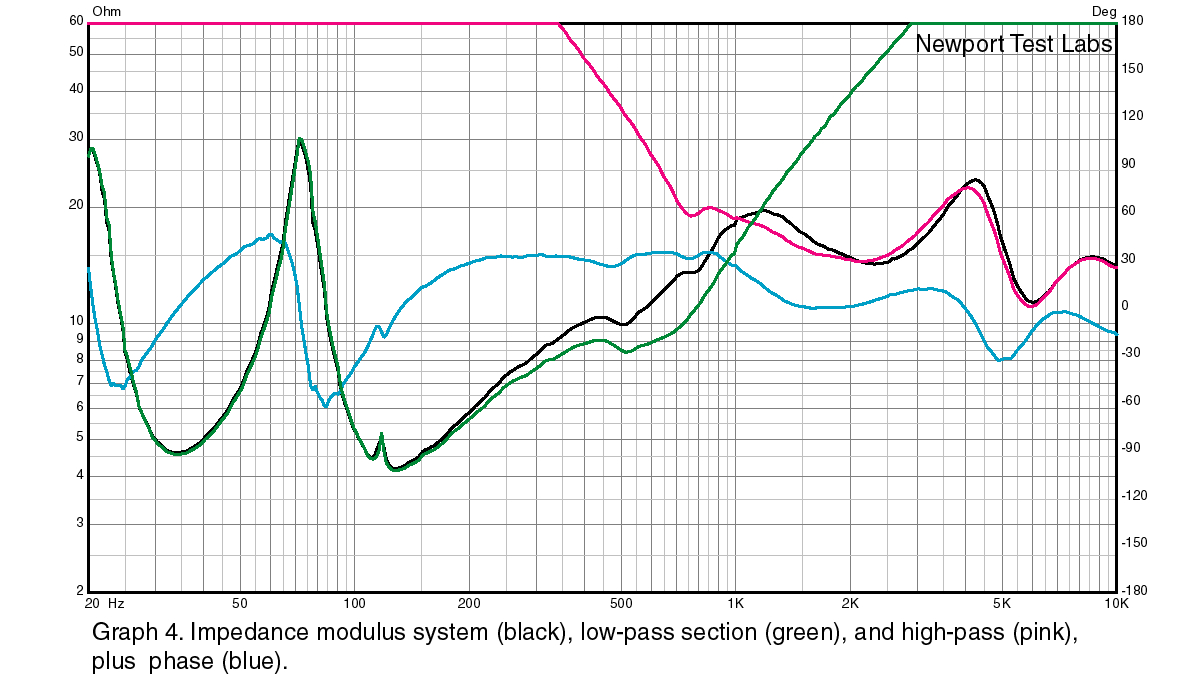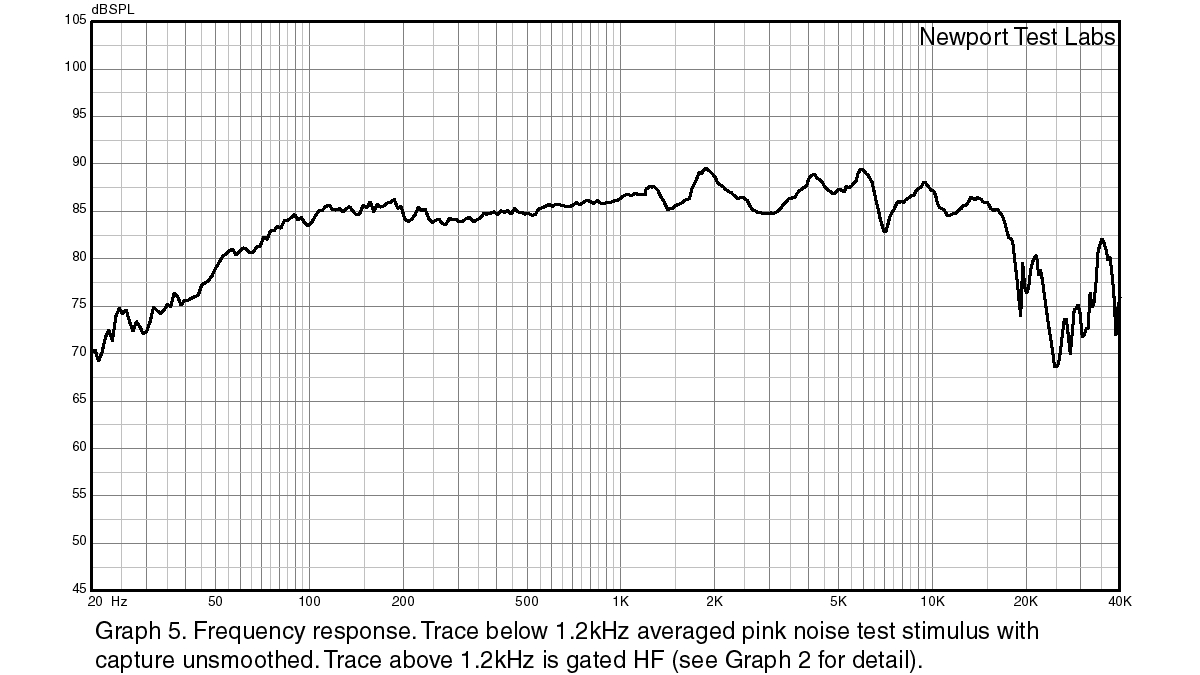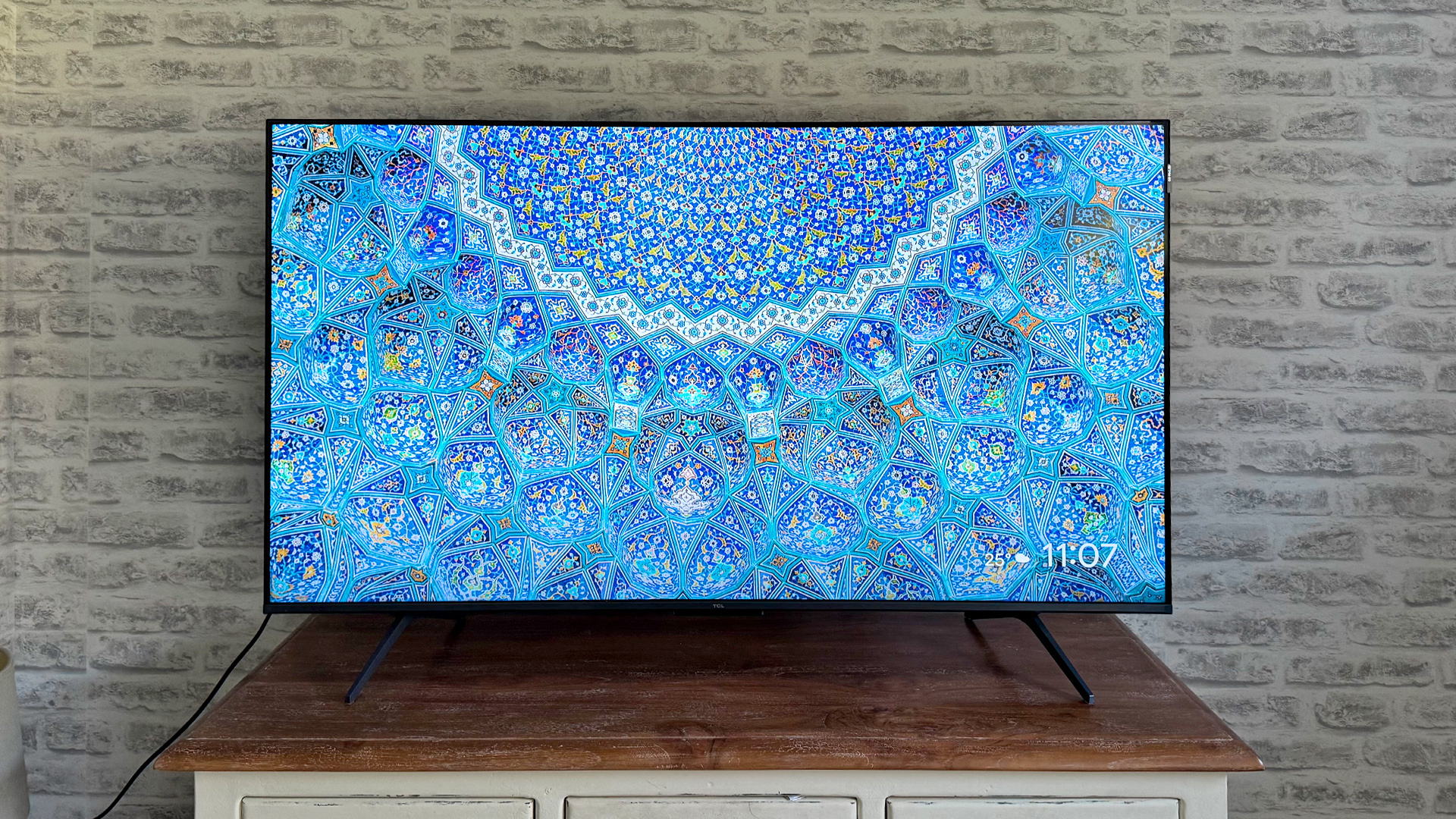What Hi-Fi? Verdict
This latest version of a half-century-old design sounds better than any of the models that have preceded it. And with good reason: It's a totally different design. Not that you'd know by looking at it!
Pros
- +
Super efficiency
- +
Superb bass and mid clarity
- +
Sound belies cabinet size
Cons
- -
Speaker plinth
- -
Boxy appearance
Why you can trust What Hi-Fi?
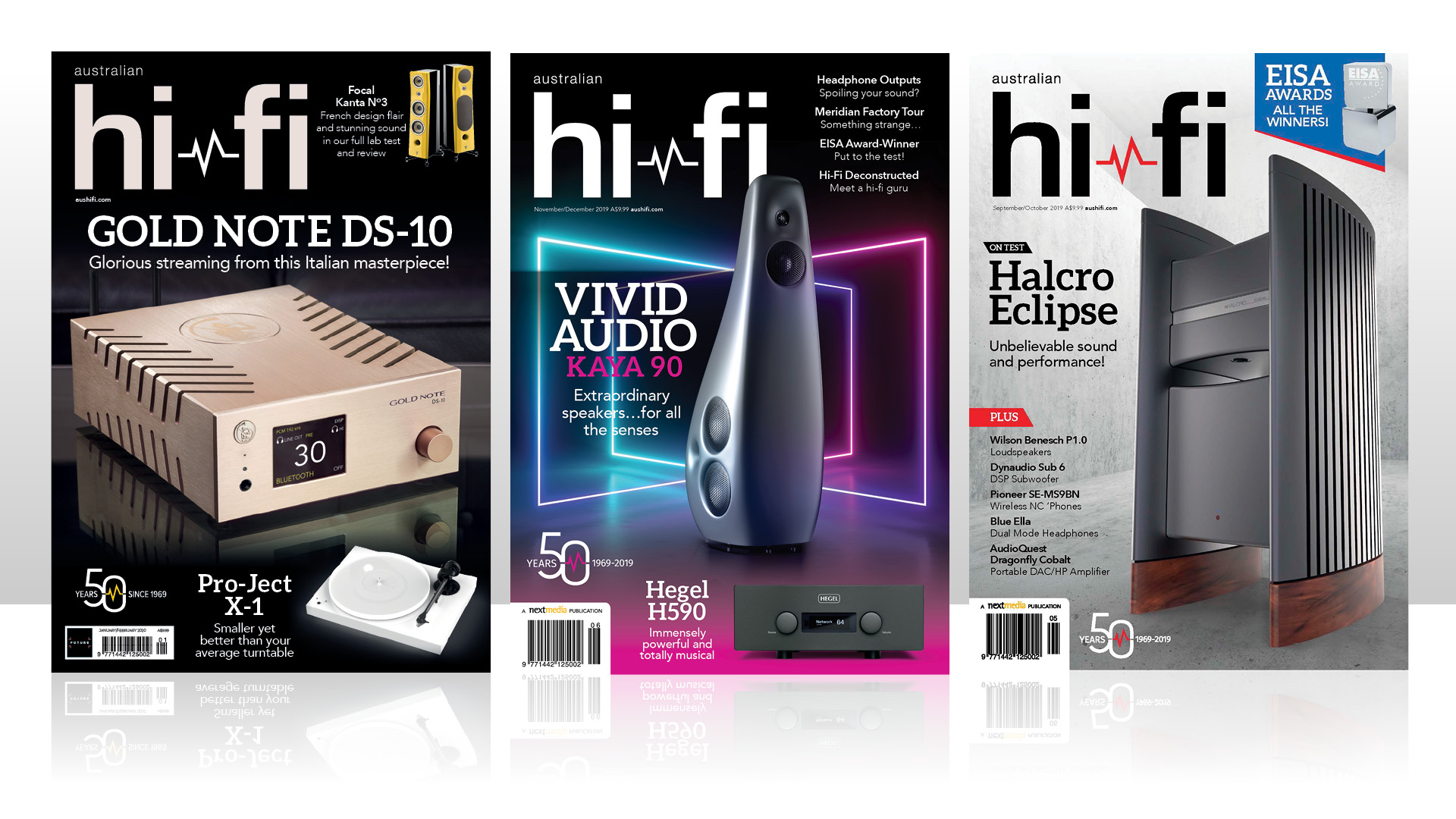
This review and test originally appeared in Australian Hi-Fi magazine, one of What Hi-Fi?’s sister titles from Down Under. Click here for more information about Australian Hi-Fi, including links to buy individual digital editions and details on how to subscribe.
"You now own one of the most revered and highly-acclaimed loudspeakers in the history of high fidelity audio."
That sentence is on the certificate you get when you purchase a pair of Klipsch Heresy IV loudspeakers. They also have a very good claim to being the only loudspeakers that have been in continuous production for more than 50 years, because Paul Klipsch, who founded the company that still bears his name, built his first pair of Heresy speakers ‘way back in 1947. It’s the reason the Heresy model and its near relation, the Cornwall, are part of the Klipsch ‘Heritage’ Series.
Oddly enough, the model name wasn’t ‘Heresy’ back in ‘47. Neither were the speakers sold as pairs. The original ‘Model H’ as it was called, was designed as a centre-channel speaker to be used between corner-mounted Klipschorns.
The ‘Model H’ was known as the Heresy only within the company. The Heresy name didn’t appear on a Klipsch brochure until 1964. (For the reason, see later on in this review, under the heading The Heresy: A Heresy!)
I was extraordinarily pleased to hear that, in order to pay homage to Klipsch’s heritage, the Heresy IVs are built entirely by hand, and entirely at Klipsch’s original home in Hope, Arkansas, despite the company’s headquarters having been moved to Indianapolis, Indiana following the company’s sale to Vox International in 2011.
Hope is not only famous for being the home of Paul Klipsch. It’s also famous for being the birthplace of former US President Bill Clinton (and for producing the world’s largest watermelons).
Of course, as you will already worked out for yourself, because of that ‘IV’ add-on to the model name originally given to it by Klipsch, the model that’s available now is very much updated from the 1947 version, though from the exterior, you’d be hard-pressed to point out the differences.
The latest hi-fi, home cinema and tech news, reviews, buying advice and deals, direct to your inbox.
The sound quality, too, is also remarkably similar, but technological advances have enabled the frequency response to be extended at both ends of the audio spectrum, the power-handling ability to have been increased, the efficiency improved and some minor frequency response irregularities have been removed.
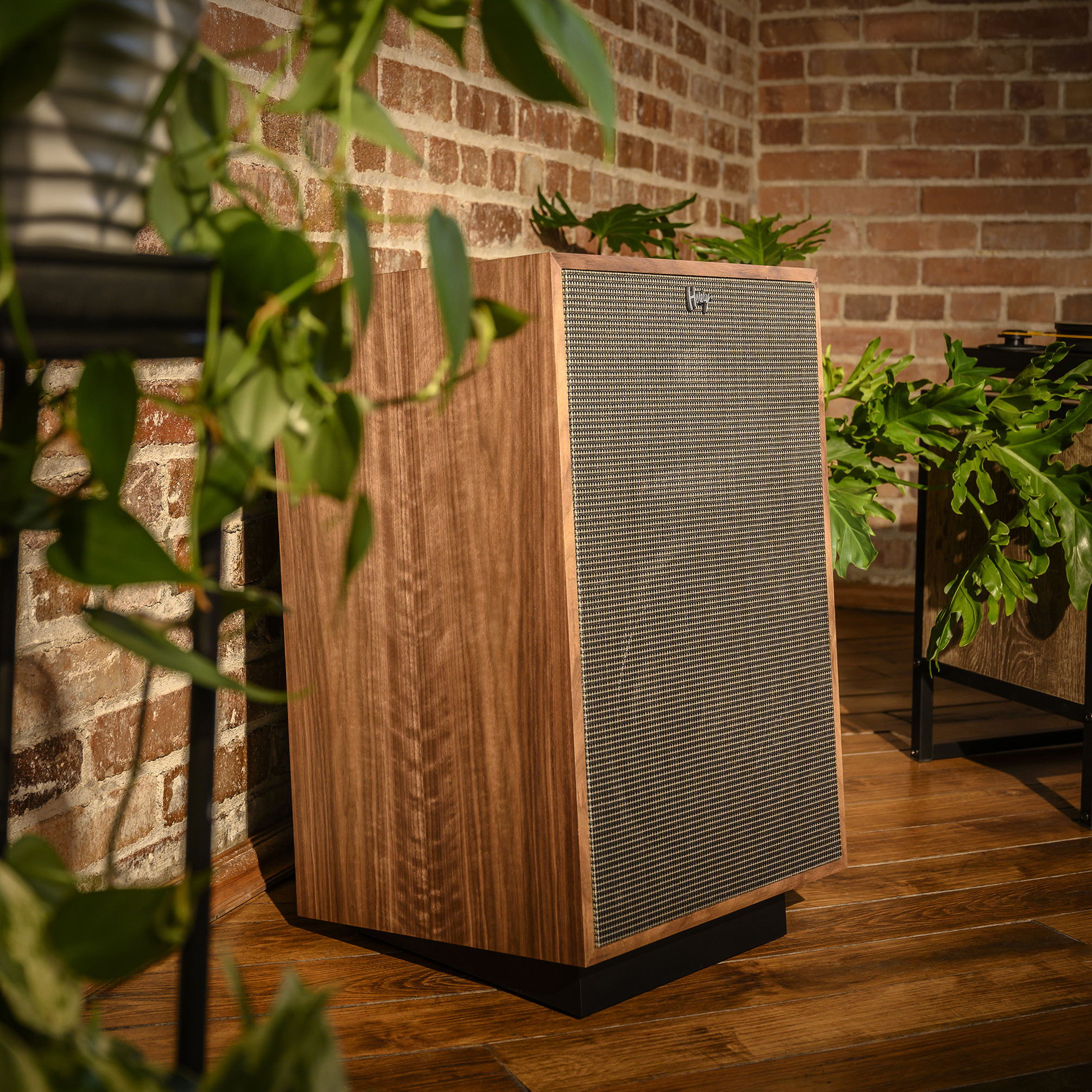
Equipment
This Klipsch Heresy IV model is not only completely different to the one introduced in 1957, it’s also substantively different from the III version that was introduced in 2006. One of the most significant of these changes is that it’s now a bass reflex design. This is surprising.
What’s not so surprising is that rather than use a conventional tubular or rectangular bass reflex port, Klipsch has instead pressed into service one of its famous ‘Tractrix’ horn throats. According to Klipsch’s Australian distributor, this change alone has improved the Heresy IV’s low-frequency extension by 10Hz, with Klipsch specifying the 4dB down-point at 48Hz.
Then there’s the tweeter, which has the same titanium diaphragm as the III, but is now fronted by a new phase plug that the company claims enables much wider high-frequency dispersion and in turn a more expansive ‘sweet spot’.
Its distortion has been reduced because the updates to the midrange driver meant Klipsch engineers could let that driver take over some frequencies previously handed by the tweeter, so they dropped the crossover point between the two by 500Hz (from 5kHz on the Heresy III down to 4.5kHz on the Heresy IV).
That new midrange driver is a polyimide-diaphragm K-702 midrange compression driver, which is loaded by a K-704 Tractrix horn and covers the audio band from 850Hz up to 4.5kHz.
Take particular note of the words ‘compression driver’ in the previous paragraph because it’s a special kind of driver that is very rarely used as a midrange driver in home hi-fi speaker systems. The midrange drivers used in most hi-fi speakers are what’s called ‘direct radiators’ – a description that comes about because the back-and-forth movement of the diaphragm (which is usually a cone, but is sometimes a dome and, occasionally, a flat panel) moves the air in the room directly.
The midrange driver in the Klipsch Heresy IV does not do this.Instead, a small 45mm diameter diaphragm (made from a synthetic material called polyimide) compresses the air in a small chamber, and it’s the resulting flow of air into and out of that chamber that in turn moves the air in the room.
Interestingly, the older Heresy III diaphragm was made from titanium, but Klipsch says this new polyimide version “offers better clarity and dynamics.”
Because a compression driver is using air to move air, its impedance-matching is perfect, so its efficiency is far higher than a direct radiator… indeed it’s usually about ten times greater.
However, there’s another important element in a compression driver, called a ‘phase plug.’ It’s the phase plug which controls the manner by which the air inside the compression chamber connects to the air in the room.
Klipsch says the midrange driver in the Heresy IV has “a newly-designed phase plug that improves frequency response, efficiency and dispersion.”
The final component for any compression driver is an external ‘horn’ to spread the output from the phase plug throughout the room. The shape of this horn is crucial to the performance of the compression driver, and many shapes have been tried over the years, including radial, bi-radial, sectoral, multi-cell and exponential.
Klipsch uses what it calls a ‘Tractrix’ horn shape – and has trademarked the word ‘Tractrix’ – which is a variation of the equitangential horn shape that was first used by famous English loudspeaker designer Paul Voigt.
One of the advantages of the equitangential horn is that whereas the more commonly-used exponential horn shapes have resonances caused by reflections at the mouth of the horn that in turn colour their sound (giving rise to that ‘horn sound’ so detested by audiophiles), the equitangential horn has almost no resonances, and therefore does not colour the sound.
The lack of resonances is due to the fact that the sound waves are almost hemispheric as they travel through the horn and, most importantly, almost hemispheric as they exit from it.
Like all horn designs, Klipsch’s Tractrix horn also enables far higher driver efficiency than would otherwise be possible because the compression drivers are better-coupled to the air they have to ‘drive’. However, the horn also means distortion is far lower than it would otherwise be, because the higher efficiency means that the diaphragm does not have to move back and forth the same distance to deliver the required sound pressure levels as would a conventional direct-radiator diaphragm.
Klipsch’s Tractrix horn has yet another benefit, which is that its dispersion pattern is perfectly suited to home theatre applications, because both horizontal and vertical dispersion angles are both carefully controlled, and identical: something that is true of no other horn geometry, and certainly can’t be delivered by an ordinary dome tweeter. So as well as being ideal for home hi-fi applications, the Klipsch Heresy IVs are also ideally suited for use as the front left and front right channels in a home theatre system.
Low frequencies are delivered by a Klipsch K-28-E12 bass driver. Although Klipsch rates this particular unit with a diameter of 305mm, the ‘cone-alone’ diameter is 245mm. The important dimension, the Thiele/Small diameter, which is used to derive the usable piston area of the cone, is a bit difficult to measure because the driver uses a very durable, but quite old-fashioned pleated coated cloth suspension rather than a modern single-roll rubber suspension system. I estimated the T/S diameter to be around 250mm, which gives a piston area (or Sd) of 490cm².
The cone is also a fairly old-fashioned design, being ribbed, but the ribbing gives enormous strength and rigidity. Klipsch says the cone is made from a ‘fibre-composite.’ From its appearance, I’d imagine the primary component of this composite is the lignocellulosic fibrous material traditionally used to form large-diameter driver cones.
Obviously, the changes to the drivers meant a new crossover, with crossover points at 850Hz and 4.5kHz and, according to the company, the crossover slopes are now modelled on those used in the Klipschorn, La Scala and Cornwall.Klipsch says the cabinets of every pair of Heresy IV speakers are grain-matched by using wood veneer panels that come from the same timber so that: “each speaker in a pair is practically indistinguishable from the other.” As for the finishes you can get the Heresys in, they are Black Ash, Natural Cherry, Distressed Oak, and American Walnut.
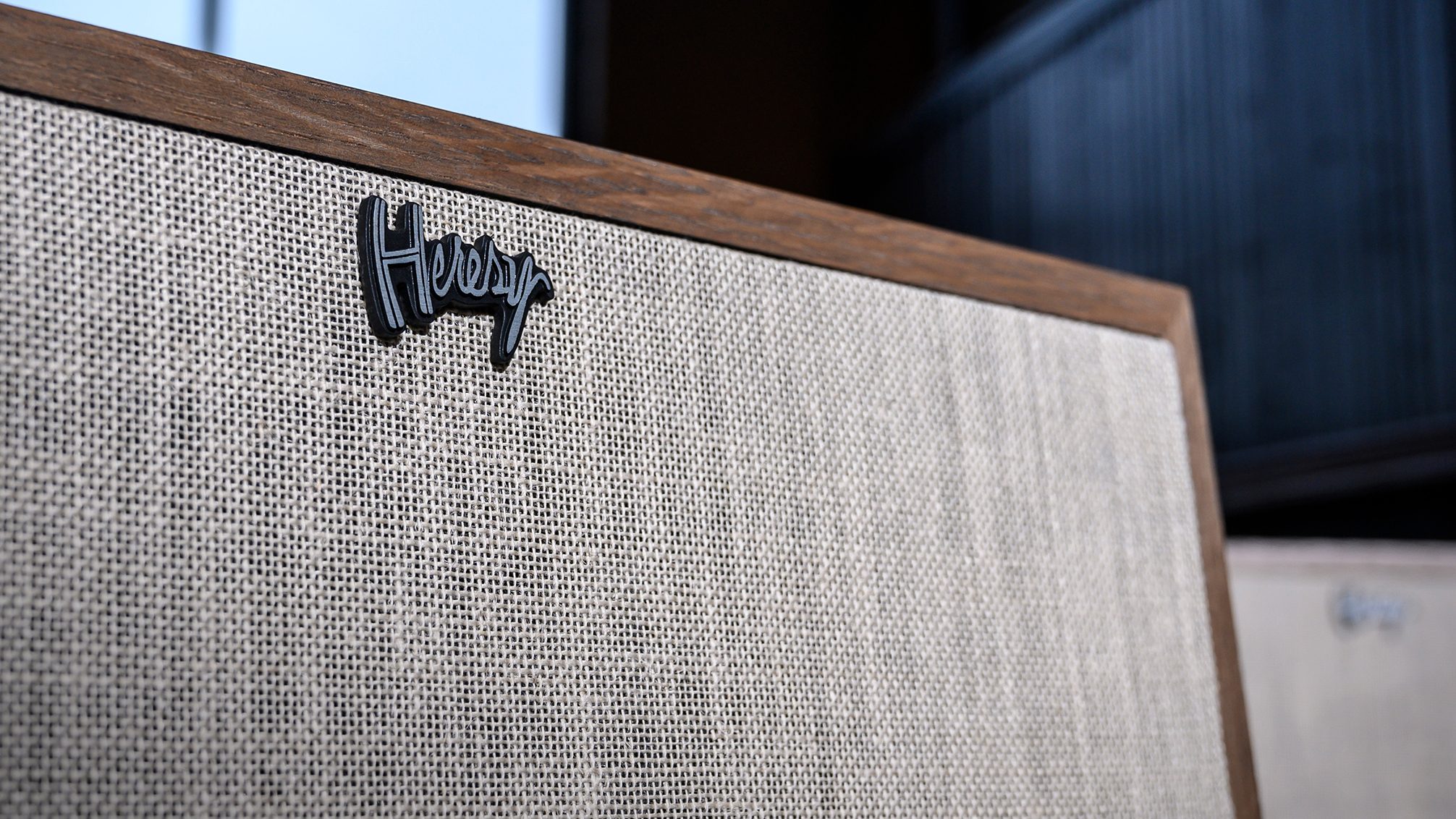
The Heresy: a heresy!
The reason Klipsch called the very first Heresy model a ‘Heresy’ within the company, but a ‘Model H’ in the company’s literature is all to do with religion.
First, you need to understand that Klipsch had built a reputation for designing and building loudspeakers that were triangular. This was because they were designed to be placed in corners. The Heresy was the first speaker Paul Klipsch had ever designed that was not intended to be placed in a corner and therefore had a non-triangular cabinet.
Early on in the design stage, one of Klipsch’s employees told him that such a design would be ‘heresy’ and the name stuck. Or at least it did within the company. The problem was that Klipsch was located in Hope, Arkansas, which is right in America’s so-called ‘Bible Belt’, so many of the company’s employees were Southern Baptists and objected to the word ‘heresy’ being used in any way other than in its strict biblical sense, that is; “a belief contrary to Christian doctrine.”
So the model was called the Model H while they decided what it would be called. This proved to be more difficult than you’d imagine, with the company not being able to come up with a name at all, despite running three separate naming competitions, none of which delivered a satisfactory result.
Eventually a salesman (Bob Moers) who had been hired by Paul in 1961 to improve the company’s sales figures, and had put up with the naming debacle for three years, put his foot down and told everyone to “get over it”, with the result that the company’s 1964 brochure included the “Heresy” in the Klipsch range for the first time.
In a strange twist of fate, the model proved to be particularly popular for use in places of worship, so much so that by 1973 Klipsch was running a national advertising campaign in the USA featuring the model that was tag-lined “Heresy in the Church.”
Listening sessions
It’s rare to find a 305mm driver these days in anything but the very largest hi-fi loudspeakers, and almost unheard-of in a pair of speakers that are as small as the Heresy IVs, so when I fired my review pair up for the first time, I was fully expecting to hear deep and powerful bass. In fact, I half-expected that Klipsch’s designers might have taken advantage of the huge cone size to over-egg the bass and make it too prominent in the mix.
To my surprise, neither of my expectations were realised.
Not only have the engineers not over-egged the bass response, but the bass is neither overly powerful nor overly deep. Indeed, it didn’t dig as deep as I expected and is remarkably balanced across its pass-band. At least that was my first impression.
Further listening confirmed the excellent tonal balance, but revealed that my initial impression of lack of bass depth was created mostly by a lack of distortion. The bass is so super-cleanly delivered that it seems a bit ‘light’ but what you’re hearing is an absence of the second and third-harmonic distortion components that are typical of loudspeaker systems using bass drivers with smaller cones.
My comment in the previous paragraph notwithstanding, the Heresy IVs do not dig overly deep into the subterranean depths of bass… something even Klipsch makes clear with its specification of –4dB at 48Hz, which means that I would certainly be using them in conjunction with a subwoofer, even in a purely two-channel system. However, since I have yet to hear a pair of loudspeakers with which I would not use a subwoofer, that puts the Heresy IVs in good company!
In fact the Heresy IV’s 48Hz –4dB down-point is actually a real advantage when it comes to partnering them with a subwoofer because it means there will be very little overlap at the crossover point and you’ll be able to get excellent results even with a fairly small subwoofer, since it will only have to deliver a fraction more than a single octave of the audio band… from 48Hz down to 20Hz.
But you do need to consider how low you need to go. The lowest note playable on a bass guitar or double-bass is around 41Hz, and the Heresy IV will easily deliver this frequency. OK, so piano goes down to 27.5Hz, but composers rarely require a pianist to play anything below a bottom ‘F’, and that has a frequency of 43Hz. So if you’re not using the Heresy IVs as the front channels in a home theatre system, you may well feel you have no need for a subwoofer.
You’ll also be able to ‘tune’ the bass you’re getting by harnessing the output from those large rear-firing Tractrix bass ports. For maximum bass, move the speakers close to the wall behind them. The ‘tilt’ of the cabinet makes this very easy. If you’d like a little less bass, move the speakers away from the wall.

No matter how you position the Heresy IVs, you’ll never overpower the bass. Prove it to yourself by listening to Angel, by Massive Attack. The Klipsch delivers the powerful bass riff masterfully and no matter how high you turn up your volume control, the sound won’t become distorted or muddy. (Actually, the riff is so repetitive, you could use this track for speaker positioning, relative to the rear wall.)
If Massive Attack isn’t your bag, you could instead listen to Van Morrison’s Moondance which will have the advantage that you can also use this to admire the Heresy IVs’ midrange.
When it comes to midrange sound, which is where most musical (and vocal) action takes place, the Klipsch Heresy IVs sound simply amazing. Listen to any vocalist and you’ll hear not only every syllable of every word they’re singing – and every breath they take (no matter how small) – but also every single inflexion. The incredible clarity and liveness this imbues in solo singers is amazing enough, but when you’re listening to multiple vocalists, right up to a full choir, the detailing becomes incredible.
Listening to massed choirs, it seemed that I was able to follow individual voices even amongst those who were singing in unison. Indeed listening to works such as Beethoven’s 9th, the power and presence of the choir not only gave me that ‘you are there’ feeling, but also sent an actual tingle down my spine and raised the hairs on the back of my neck.
Which version to listen to? Well for this review I listened to Klemperer with the Philharmonic Orchestra and Philharmonia Choir (EMI, not the Testament version). And if you’re wondering whether an English choir could do the 9th justice, this one was assembled by Walter Legge and trained by Wilhelm Pitz, Furtwängler’s chorusmaster.
Speaking of Wilhelm, the Klemperer version has usurped (at least for the present) my previous favourite, which was Furtwängler with the Bayreuth Fest Orchestra and choir. Obviously, these have the drawbacks of being very old recordings, but they still sound pretty good. If you are one of those who values sound quality over performance quality, I’d recommend listening to Claudio Abbado and the Berlin Philharmonic on Sony (516 2302).
As for the sweet spot, let me tell you about the sweet spot. Whereas with many speakers you need to shuffle your body around to find it, and a few minor head movements will cause it to collapse entirely, with the Klipsch Heresy IVs it was more a case of finding where there wasn’t a sweet spot. Basically, you can sit pretty much wherever you like (within reason) and you’ll hear a perfectly formed stereo image and an amazingly wide (and high!) sound-stage.
But what you will also hear in this – or in any other – position is a total and complete lack of distortion and absolutely zero colouration. And whereas I thought that the Heresy IIIs were, perhaps, just a little forward in the upper highs, I didn’t experience this at all with the Heresy IVs, which is presumably one of the reasons for the switch in diaphragm material from titanium to polyimide.
I initially feared that this material switch might have affected the performance with transients, but no, the Heresy IV’s attack was still insanely quick – you won’t hear any time lag from these speakers… not even a microsecond’s worth.
As for the treble, I think Klipsch has been very wise not to use a compression driver and instead stick with more conventional ‘domestic’ technology, albeit with the addition of a horn to unify the radiation pattern with that of the midrange driver. The result is that the high-frequency sound is crisp and sharp, but never becomes edgy, and is certainly not forward, even at higher sound pressure levels.
The sound is far more ‘exciting’ than I hear from soft-dome tweeters, but didn’t have the ‘peakiness’ I usual hear when listening to metal-domed tweeters. Again, the clarity of the sound is worthy of note. Klipsch has obviously steered the high-frequency balance down a very clear sonic path, accentuating the virtues whilst at the same time avoiding the pitfalls.
Klipsch makes much of the efficiency of its speakers – including the Heresy IV – and other reviews I have read seem always to give it a mention, but I have to say that although I could hear they were efficient (efficient speakers seem to imbue a certain ‘presence’ and excitement into any music played through them) and I could hear that the Heresy IVs were more efficient than my own reference speakers, which are rated with an efficiency of 91dBSPL, I didn’t think they were that much more efficient than them. I guess it’ll be up to Newport Test Labs to prove me right or wrong, but that’s certainly what my ears (and the position of my preamp’s volume control) were telling me. (Editor’s Note: According to Newport Test Labs’ measurements, you were right.)
I also feel the need to point out in this review that you should not be misdirected about the size of the Klipsch Heresy IVs by any photographs you see of them, because every image I have ever seen of them, either on the internet or in a magazine advertisement, has made them seem a lot larger than they actually are.
Yes, I do think they look a bit boxy from the front, because of the size of the baffle needed to accommodate that 305mm bass driver, not to mention the Tractrix horns fronting the midrange driver and tweeter, but in terms of height they’re almost knee-high to a grasshopper (and in point of fact, they are literally a hands-breath over being knee-high), and will protrude only a forearm’s length from a rear wall (right up to which they can be pushed, thanks to the clever design, as I said earlier).
So if you saw a photograph and thought ‘gee, they look too big for my room’ take the time to see them in the flesh, because you’re in for a big surprise. And, since you’re taking a look, why not take the time to have a good listen as well, because I think you’ll find that experience a surprise as well… and a very pleasant one at that!
However, despite the fact that the Heresy IV’s are smaller than they look, their sound is on the big side, so don’t be lulled into thinking you’ll be able to put them in a small room and sit right up close.
My experiments over a variety of listening distances revealed that I preferred to be no closer than three metres away from the speakers, and could happily push this out to five metres. Further than five metres was also fine, but I had to chock up the rear of the speakers to have the tweeters firing a little more parallel to the floor when listening at this distance.
As for the maximum size room in which they could be used, I found that the larger the room I used them in, the more airy and more spacious the Heresy IVs seemed to sound.
Verdict
Just as some car marques are classified as ‘royalty’ in their sphere (Lamborghini, Ferrari) as are some exotic motorcycle marques (NCR, MV Augusta), so it is with loudspeaker marques, with Klipsch being one of the premier ‘royals’ amongst them.
The Klipsch Heresy IV has a lineage that can be proved by DNA testing, a look that’s barely changed over half a century, and unlike many famous marques that are trading on their former glories, the Heresy IV is still manufactured in the good ol’ USA, in Hope, Arkansas.
The only thing that has really changed is the sound... and that change has been for the better. So if you ever wanted a chance to buy a piece of hi-fi history, now has never been a better time to do it.
Full lab test results
Graph 1 (below) shows the in-room frequency response of the Klipsch Heresy IV that was measured by Newport Test Labs.
You can see that it’s very linear, such that across the frequencies encompassed by the graph, the trace is within ±3dB from 70Hz right up to the graphing limit (10kHz for this graph).
The high-frequency response of the Klipsch Heresy IV is shown in detail in Graph 2, with the detail provided thanks to the gated measurement technique used by Newport Test Labs, which delivers the exact response that would be obtained if the speaker had been measured in an anechoic chamber (i.e., no room effects).
The first thing to note is that the response is almost identical no matter whether the grille is fitted or not, so Klipsch has done a superb job with the grille material and the design of the grille frame. I rarely see a result as good as this.
You can see that the frequency response extends from 700Hz (the low-frequency graphing limit for the gating test technique in this case) out to 6.8kHz ±2.5dB, after which there’s a tiny dip that, whilst visible, would not be audible.
Above this, the response extends within ±2.5dB out to around 18kHz, after which there’s a fairly sharp roll-off. Given that there are very few people over the age of 30 whose hearing extends up to 18kHz, I really can’t count this against the Heresy IV.
Although the response rises again immediately after the dip, Graph 5 shows that it continues rising only up until it reaches around 22kHz, after which it rolls off to a minima at 25kHz before rising again to 35kHz then rolling off to 40kHz (the highest frequency for which the test microphone is calibrated). Phase is very nicely controlled, mostly remaining within ±30°.
The tuning of the Heresy IV’s bass reflex port is unusual, as you can see in Graph 3. As measured by Newport Test Labs, the port’s output peaks down at around 28Hz, though you can see that the work ‘peak’ is not strictly accurate, because the port delivers substantial output all the way from around 18Hz up to 90Hz.
This result would suggest to me that where you place the cabinet with respect to the wall behind it is going to have a considerable effect on both bass level and bass extension.
As for the bass driver itself, its output is within ±4dB from 400Hz down to 62Hz and rolls off smoothly to a minima at around 38Hz.
The impedance of the Heresy IV design (shown above in Graph 4) lies below 8Ω all the way from the lower measurement limit (10Hz) all the way up to 280Hz except for the two resonant peaks (at 20Hz and 71Hz), reaching a minimum impedance of 4.2Ω at 133Hz. This means that although Klipsch puts the nominal impedance at 8Ω it should – if it were rated according to the European International Electrotechnical Committee’s guidelines – be rated with a nominal impedance of 5Ω.
So, since manufacturers for some reason don’t like using ‘odd’ numbers in their impedance specifications (3, 5, 7, 9 etc), I think Klipsch should have gone for 4Ω as the ‘nominal’ impedance rather than 8Ω. You can see evidence of some system resonances on the traces particularly at around 125Hz, but also at 500Hz and 800Hz.
The electrical crossover point for the high-pass and low-pass sections of the crossover is at 1.2kHz. You can see that the Heresy IV’s impedance starts climbing steeply above 550Hz, suggesting to me that Klipsch has padded down the midrange and tweeter.
Overall, the frequency response of the Heresy IV measured by Newport Test Labs that’s shown in Graph 5 is 70Hz to 17kHz ±3.5dB.
As for the Heresy IV’s efficiency, using its standard stringent test methodology, Newport Test Labs reported sensitivity as being 93dBSPL at one metre for a 2.83Veq input.
Although this is a massive 6dB shy of Klipsch’s claim of 99dBSPL, it still makes the Heresy IV the most efficient loudspeaker the laboratory has tested in over a decade, so it’s a very efficient loudspeaker indeed and will be able to produce very high sound pressure levels with even the lowest-powered amplifiers, including single-ended-triode designs.
Overall, it would appear that Klipsch’s engineers have had to walk a tight-rope in order to extract more performance from this new Klipsch Heresy IV whilst remaining true to the original design, as well as pulling off the near-impossible trick of using the same low-frequency driver in the same-size cabinet while changing the alignment from being sealed to being ported. They’ve done remarkably well. I was very satisfied by the performance of the Klipsch Heresy measured by Newport Test Labs.
Australian Hi-Fi is one of What Hi-Fi?’s sister titles from Down Under and Australia’s longest-running and most successful hi-fi magazines, having been in continuous publication since 1969. Now edited by What Hi-Fi?'s Becky Roberts, every issue is packed with authoritative reviews of hi-fi equipment ranging from portables to state-of-the-art audiophile systems (and everything in between), information on new product launches, and ‘how-to’ articles to help you get the best quality sound for your home.
Click here for more information about Australian Hi-Fi, including links to buy individual digital editions and details on how best to subscribe.
